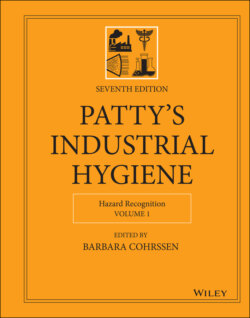Читать книгу Patty's Industrial Hygiene, Hazard Recognition - Группа авторов - Страница 53
5.1 Making Your Case
ОглавлениеMultiple organizations have introduced frameworks and tools to demonstrate the importance of and value in investing in health and safety. Some resources that may be helpful include:
Safety Pays (OSHA): https://www.osha.gov/safetypays/
Safety Pays in Mining (NIOSH): https://www.cdc.gov/niosh/mining/content/economics/safetypays.html
Business Case for Process Safety (AIChE): https://www.aiche.org/ccps/business-case-process-safety-pdf
Construction Solutions Return on Investment Calculator (CPWR): https://www.safecalc.org/
Technical Framework: Business Value Presentation: https://www.aiha.org/education/frameworks/technical-framework-business-value-presentation
It may not be sufficient to demonstrate the monetary, reputational, or other benefits associated with a health or safety improvement to gain support from management, workers, human resources, finance, or other decision makers. John P. Kotter, an internationally recognized researcher and author of multiple books on leadership and change, outlines eight common errors made by those seeking to make change and eight steps for effectively achieving it. The eight steps are as follows (18):
1 Establishing a sense of urgency
2 Creating the guiding coalition
3 Developing a vision and strategy
4 Communicating the change vision
5 Empowering broad‐based action
6 Generating short‐term wins
7 Consolidating gains and producing more change
8 Anchoring new approaches in the culture.
Invoking the all‐to‐common situation of the “lone IH,” below is a sample approach more specific to a single issue in the field. In this example, the IH is advocating for an engineering control, such as installation of local exhaust ventilation, to remove the need for respirators in an operation. Note that Kotter specifies that the steps do not always proceed sequentially and often need to overlap, but skipping steps or skipping too far ahead is not recommended.
1 Present the concern and potential ramifications of maintaining the status quo – this might include concerns about respirators as a last line of defense, potential for citations for failing to implement feasible engineering controls, and the cost of maintaining a respiratory protection program, among others.
2 Build a team. Obtain buy in from and involve decision makers, influential leaders, and those affected by the change. This could be a task force or small committee.
3 Work with the team to research options, costs, and develop a plan for implementation.
4 Share the concern and proposed solution and plan with those who will be involved with and responsible for the implementation of the proposed solution. Involving the workers who will be using or affected by the engineering control is particularly crucial to ensuring it fits with their workflow and will be utilized.
5 Provide opportunities for others to take actions necessitated by the change, such as training for workers, supervisors, and management on their roles related to the engineering control. Remove barriers to utilizing the new engineering control, such as outdated operating procedures or interfering equipment. Confirm that the new control does not affect other aspects of operation. Rewrite existing procedures to reinforce use of the engineering control.
6 Implementation of an engineering control could be a short‐term win for a larger IH program or campaign, but small wins in the implementation will also be helpful for ensuring support for the work. “Plan for results,” as Kotter suggests. Include milestones in the installation plan, such as project approval, design completion, starting construction, testing (including air monitoring), and launch and removal of respirator requirements.
7 Using the momentum of the smaller gains, enlist additional help to meet the primary goals, in this case, the implementation of the engineering control. At this stage, Kotter recommends giving more agency and leadership to lower ranks, perhaps this could mean delegating some of the remaining key deliverables to members of the task force. Management's role, says Kotter, is to convey the shared purpose and urgency of change.
8 In order for any change to last, Kotter strongly suggests “grafting” some of the key new aspects or values of the chance onto the existing culture. This could mean something as simple as ensuring that the new operating procedures for the engineering control are seamlessly built into existing protocols (or, that the existing procedures are brought up to newer standards). Or, to bring culture change on a larger scale, the task force could create a campaign highlighting the success of implementing the control, and, with vocal support from management, encourage similar projects and changes throughout the organization.
This is a rather simple situation, albeit common and challenging to address with management. One could imagine the need for much broader change in a company's industrial hygiene program that could benefit from this approach. For example, a company might rely on outdated occupational exposure limits, consistently underfund and under‐resource the industrial hygiene program, or depend on a supply chain riddled with unsafe and unfair practices – this issue is highlighted in Case Study 3.
